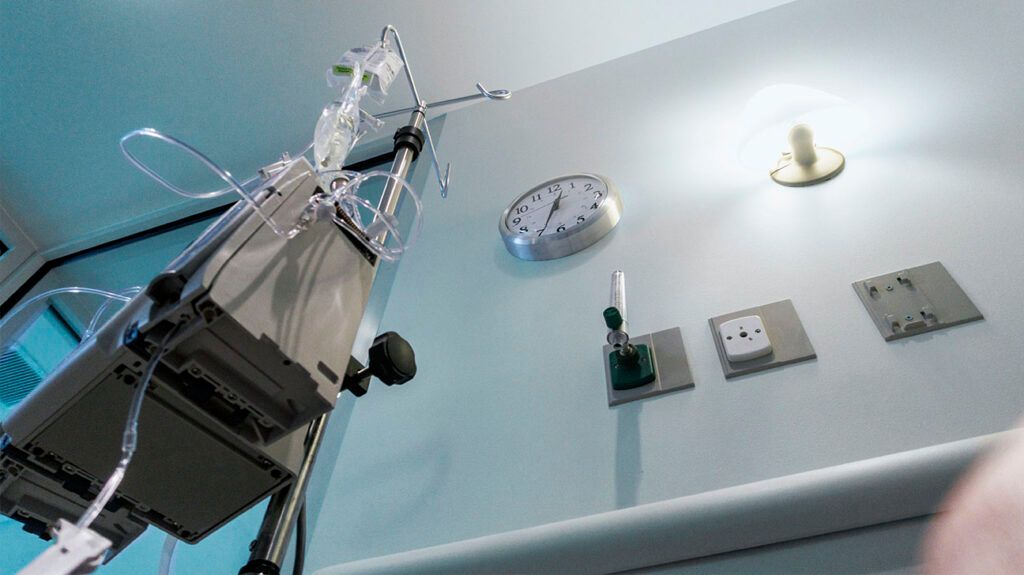Doctors often use chemotherapy for myeloma in combination with other therapies, such as stem cell transplantation or targeted therapies. This approach aims to eliminate cancer cells while minimizing potential side effects.
Myeloma is a cancer that originates in the bone marrow, specifically from plasma cells. Plasma cells are white blood cells that come from the bone marrow.
In myeloma, atypical plasma cells in the bone marrow grow uncontrollably, interfering with blood cell production and causing various symptoms.
In the past, chemotherapy was part of the core treatment plan for myeloma. The technique uses powerful drugs to target and destroy rapidly dividing cells, such as cancer cells. As newer therapies have emerged in recent years, chemotherapy for myeloma has become less important, although doctors may still recommend it in certain situations.
This article explores chemotherapy for myeloma, its uses, side effects, and alternatives.

Chemotherapy for myeloma involves using potent drugs that target and destroy cancerous plasma cells in the bone marrow. These drugs aim to destroy or control the growth of cancer cells.
A person can take these orally or intravenously through a vein.
Chemotherapy can sometimes lead to significant remission or prolonged disease control. However, certain factors can affect its effectiveness, including:
- the stage of disease
- how well a person responds to it
- a person’s overall health status
A 2022 study suggests that the overall response rate to chemotherapy is 76%. However, the likelihood of complete remission is higher in people receiving bortezomib-based therapy, which is a type of biological therapy.
Learn more about chemotherapy.
Healthcare professionals administer chemotherapy to people with myeloma at various points during their treatment journey. This may be:
- during the initial treatment stage for those newly diagnosed
- after stem cell transplantation, if there is evidence of remaining cancer cells
- if and after the cancer returns following treatment or proves challenging to treat
Chemotherapy can be a fixed number of cycles or indefinite as long as it is working and controlling the cancer. Each cycle can last between 21 and 35 days. Some people take drugs daily, while others can take them weekly.
The timing of chemotherapy depends on individual factors and the medical team’s treatment strategy.
Chemotherapy drugs that treat myeloma
- bendamustine (Treanda)
- cyclophosphamide (Cytoxan)
- doxorubicin (Adriamycin)
- etoposide (VP-16)
- liposomal doxorubicin (Doxil)
- melphalan
The medical team gives these drugs alone or in combination with other treatments.
Chemotherapy for myeloma can cause side effects, which can vary depending on the specific drugs and the individual’s response.
Common side effects
- nausea and vomiting
- fatigue
- anemia
- constipation
- diarrhea
- lowered resistance to infections
- nerve problems, such as numbness, tingling, and pain, which doctors call peripheral neuropathy
- hair loss
- easy bruising and bleeding
- kidney problems
- weight changes
- changes in concentration, focus, and mood
People can discuss any side effects with their healthcare team and require regular treatment monitoring. There are treatments to address some of these side effects.
Learn more about the side effects of chemotherapy.
Some people may undergo several cycles of chemotherapy over several months, while others may receive
Generally, the length of treatment can vary and can depend on the following:
- disease stage
- a person’s response to treatment
- overall treatment goals
In addition to chemotherapy drugs, myeloma treatment often includes other medications.
These may include:
- Immunomodulatory drugs (IMiDs): Thalidomide is one of the earliest drugs doctors recommended for myeloma. IMiDs change how the immune system responds to myeloma cells. This class of medication carries out “anti-growth activities,” which affect cancer cells such as those in multiple myeloma. Newer IMiDs include lenalidomide (Revlimid) and pomalidomide (Pomalyst).
- Proteasome inhibitors: These drugs block the activity of proteasomes, which are enzyme complexes that break down proteins within cells. By hindering the action of proteasomes, the drugs can disrupt the cancer cell’s activity and prevent cell division. Carfilzomib is a common option for myeloma treatment.
- Monoclonal antibodies (MAb): Daratumumab is an example of a monoclonal antibody. These drugs target specific proteins on the surface of myeloma cells, such as CD38. By binding to these proteins, MAbs trigger an immune response that destroys cancer cells. They are often effective in people with relapsed or refractory myeloma, both of which do not respond well to other treatments.
The drugs above can complement chemotherapy and target different aspects of the disease, enhancing treatment effectiveness and minimizing side effects.
Learn more about treatments for multiple myeloma.
Chemotherapy was once a critical component of myeloma treatment, working to target and destroy cancerous plasma cells in the bone marrow. Today, we have more classes of medications, such as monoclonal antibodies, proteasome inhibitors, and immunomodulators, to help target cancerous cells in multiple myeloma.
Still, chemotherapy has its uses, especially for people who have had stem cell transplants.
Doctors may administer chemo at different stages of the disease treatment plan and use it with other medications. While chemotherapy can lead to significant remission or disease control, it may also have side effects that require careful management.
